Homayoon Oraizi
Wideband High Gain Meatsurface-Based 2*2 MIMO antenna with Highly Isolated Ports for Sub-6 GHz 5G Applications
Aug 26, 2023Abstract:A high gain and wideband MIMO antenna with highly isolated ports allows the 5G technology to provide reliable wireless communication with high data rate, low latency, increased channel capacity, high signal quality, low power, and high data throughput while maintaining the penetration rate. This study presents the design and simulation of two wideband, high gain, metasurface-based $2\times2$ MIMO antennas operating from 2.85 to 4.2 GHz for 5G applications, which satisfy the 5G requisites. The radiating elements of the two MIMO antennas use the aperture coupled feeding technique with a dumbbell shape slot, a metasurface layer that utilizes the surface wave propagation, and a truncated square patch with two U-shaped slots to attain wideband and high gain performance. The power of the feed radiates through the dumbbell shape slot to illuminate the radiating patch, which allows better manipulation of the coupled power compared with the rectangular slot. The proposed MIMO structure places four identical radiating elements like a $2\times2$ matrix with a rotation of $0^\circ$, $90^\circ$, $180^\circ$, and $270^\circ$ to produce orthogonal electromagnetic waves, which improves the isolation between ports. Two vertical and horizontal strip slots are engraved on the ground as the decoupling structure to decrease the mutual coupling among the radiating elements. Besides, the aperture-coupled feeding technique increases the independence between the radiating elements by isolating the radiating patches and the microstrip feed lines. The CST and HFSS software are used to simulate the antennas.
Deep Learning Framework for the Design of Orbital Angular Momentum Generators Enabled by Leaky-wave Holograms
Apr 25, 2023



Abstract:In this paper, we present a novel approach for the design of leaky-wave holographic antennas that generates OAM-carrying electromagnetic waves by combining Flat Optics (FO) and machine learning (ML) techniques. To improve the performance of our system, we use a machine learning technique to discover a mathematical function that can effectively control the entire radiation pattern, i.e., decrease the side lobe level (SLL) while simultaneously increasing the central null depth of the radiation pattern. Precise tuning of the parameters of the impedance equation based on holographic theory is necessary to achieve optimal results in a variety of scenarios. In this research, we applied machine learning to determine the approximate values of the parameters. We can determine the optimal values for each parameter, resulting in the desired radiation pattern, using a total of 77,000 generated datasets. Furthermore, the use of ML not only saves time, but also yields more precise and accurate results than manual parameter tuning and conventional optimization methods.
A deep learning approach for inverse design of the metasurface for dual-polarized waves
May 12, 2021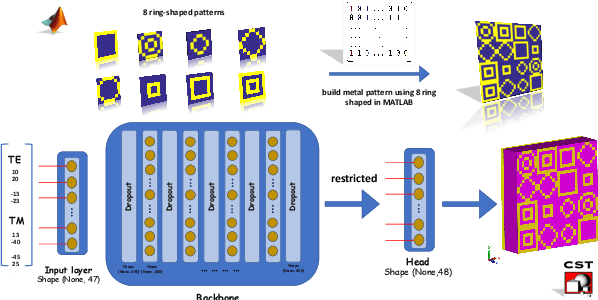
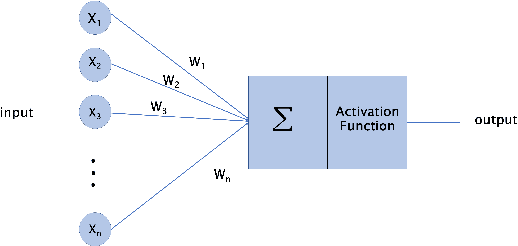
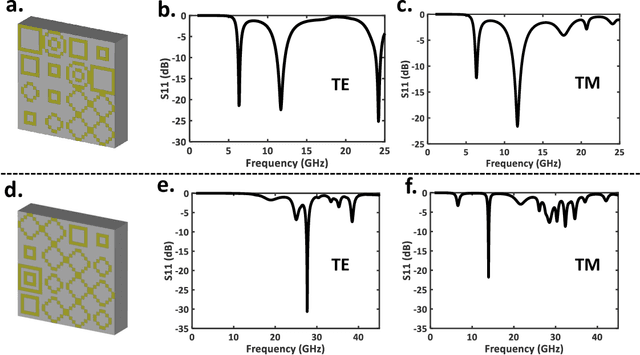
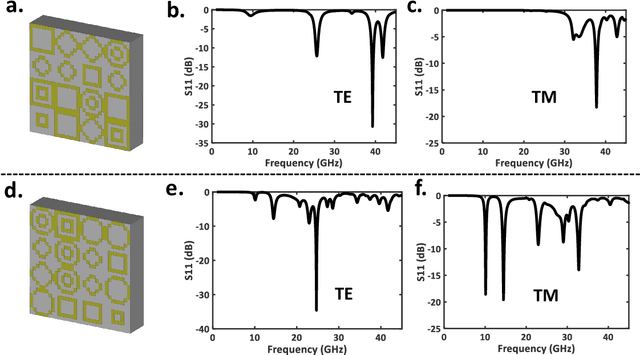
Abstract:Compared to the conventional metasurface design, machine learning-based methods have recently created an inspiring platform for an inverse realization of the metasurfaces. Here, we have used the Deep Neural Network (DNN) for the generation of desired output unit cell structures in an ultra-wide working frequency band for both TE and TM polarized waves. To automatically generate metasurfaces in a wide range of working frequencies from 4 to 45 GHz, we deliberately design an 8 ring-shaped pattern in such a way that the unit-cells generated in the dataset can produce single or multiple notches in the desired working frequency band. Compared to the general approach, whereby the final metasurface structure may be formed by any randomly distributed "0" and "1", we propose here a restricted output structure. By restricting the output, the number of calculations will be reduced and the learning speed will be increased. Moreover, we have shown that the accuracy of the network reaches 91\%. Obtaining the final unit cell directly without any time-consuming optimization algorithms for both TE and TM polarized waves, and high average accuracy, promises an effective strategy for the metasurface design; thus, the designer is required only to focus on the design goal.
Holographic Transmitarray Antenna with linear Polarization in X band
Apr 19, 2021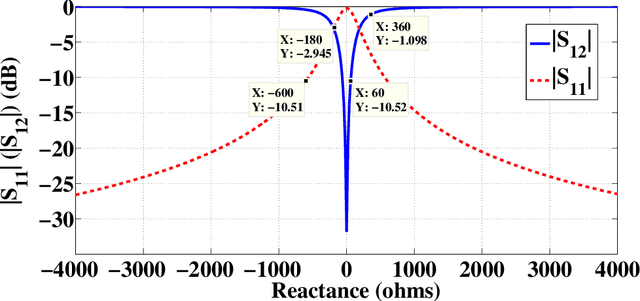



Abstract:In this paper, we present the design and demonstration of transmitarray antennas (TAs) based on the holographic technique for the first time. According to the holographic theory, the amplitudes and phases of electromagnetic waves can be recorded on a surface, and then they can be reconstructed independently. This concept is used to design single-beam and multi-beam linearly polarized holographic TAs without using any iterative optimization algorithms. Initially, a transmission impedance surface is analyzed and compared with the reflection one. Then, interferograms associated with the scalar admittance distribution are defined according to the number and direction of the radiation beams. After that, a transmission metasurface of dimensions equal to 0:26l0 is hired to design holographic TAs at 12 GHz. Several examples are provided to support the method. In the end, a linearly polarized circular aperture wideband holographic transmitarray antenna with a radius of 13.3 cm has been manufactured and tested. The antenna achieves 12.5% (11.4-12.9 GHz) 1-dB gain bandwidth and 23.8 dB maximum gain, leading to 21.46% aperture efficiency.
Deep neural network-based automatic metasurface design with a wide frequency range
Jan 22, 2021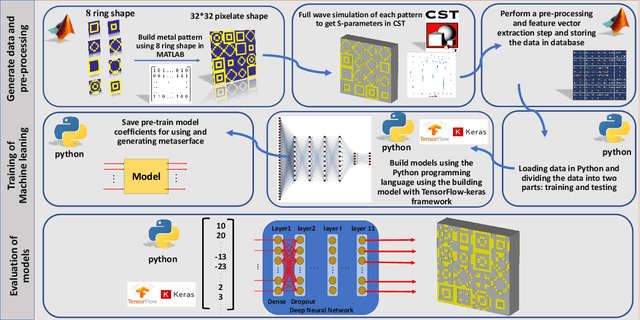
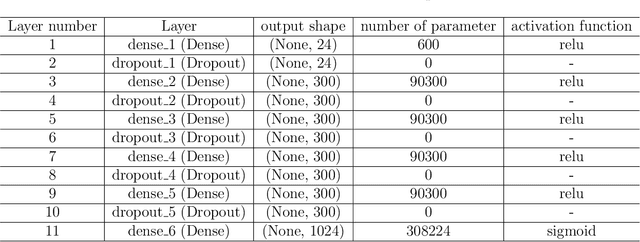
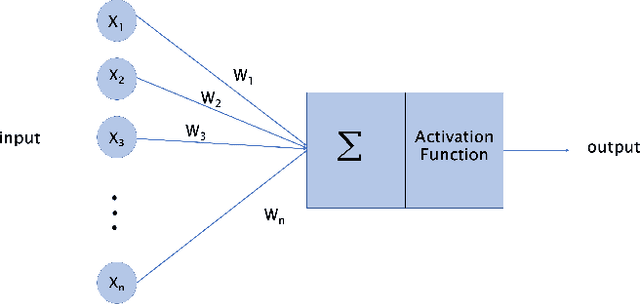

Abstract:Beyond the scope of conventional metasurface which necessitates plenty of computational resources and time, an inverse design approach using machine learning algorithms promises an effective way for metasurfaces design. In this paper, benefiting from Deep Neural Network (DNN), an inverse design procedure of a metasurface in an ultra-wide working frequency band is presented where the output unit cell structure can be directly computed by a specified design target. To reach the highest working frequency, for training the DNN, we consider 8 ring-shaped patterns to generate resonant notches at a wide range of working frequencies from 4 to 45 GHz. We propose two network architectures. In one architecture, we restricted the output of the DNN, so the network can only generate the metasurface structure from the input of 8 ring-shaped patterns. This approach drastically reduces the computational time, while keeping the network's accuracy above 91\%. We show that our model based on DNN can satisfactorily generate the output metasurface structure with an average accuracy of over 90\% in both network architectures. Determination of the metasurface structure directly without time-consuming optimization procedures, having an ultra-wide working frequency, and high average accuracy equip an inspiring platform for engineering projects without the need for complex electromagnetic theory.
 Add to Chrome
Add to Chrome Add to Firefox
Add to Firefox Add to Edge
Add to Edge